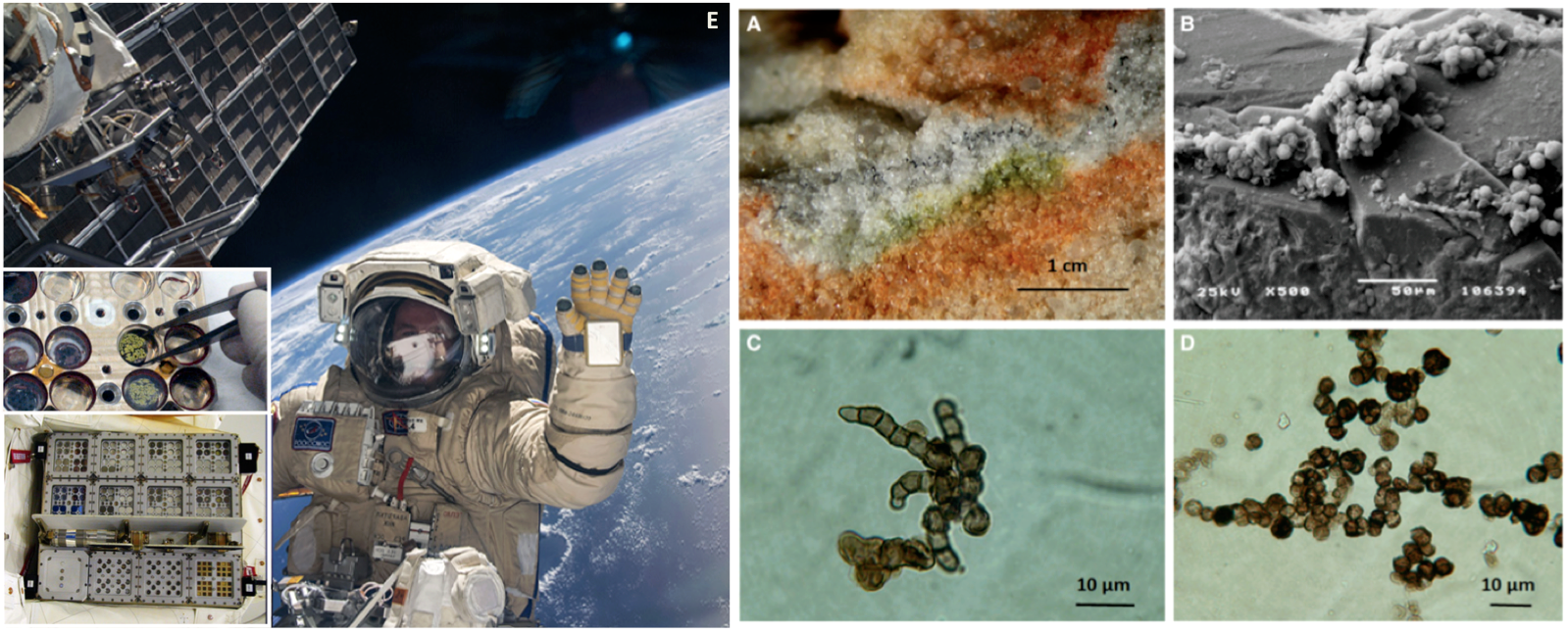Antarctic fungi able to survive martian conditions
In preparation for life-detection experiments in Mars, scientists perform studies using terrestrial organism able to grow in extreme conditions analog of Mars conditions.

In preparation for life-detection experiments in Mars, scientists perform studies using terrestrial organism able to grow in extreme conditions analog of Mars conditions. Fungi and cyanobacteria able to grow in Antarctic lie inside the narrow spectra of organisms than can be used for such purpose, due to the demanding conditions of their habitat characterized by cold and arid climate and the seasonally enhanced UV radiation.
However, to further evaluate the real ability of these terrestrial species to grow in Martian conditions and better understand what type of lifeforms may have lived on the Red Planet – or potentially still exist there – European scientists sent the antarctic rock-inhabiting meristematic fungi Cryomyces antarcticus (Fig 1C) and Cryomyces minteri (Fig 1D) as well as fragments of rocks colonized by the Antarctic cryptoendolithic community (Fig 1A) to the International Space Station that orbits a 241 mi from earth (Fig 1E).
Both fungi survived under an extreme desiccation of 10-5 Pa vacuum and a UV radiation (200–400 nm) during a preparatory test and surprisingly they also survived simulated martian conditions in low-Earth orbit on board the ISS after 18 months of exposition (1.6% argon, 0.15% oxygen, 2.7% nitrogen, 370 ppm H2O, in CO2 at a pressure of 103 Pa) . However, maybe the most relevant outcome of this research was the high stability of the cellular DNA of these fungi to the extremely demanding conditions of the space.
These results will help to determine what types of organisms can survive Mars’s harsh conditions and it might also provide some clues as to what researchers should look for on the Red Planet.

Sources:
- Silvano Onofri, Jean-Pierre de Vera, Laura Zucconi, Laura Selbmann, Giuliano Scalzi, Kasthuri J. Venkateswaran, Elke Rabbow, Rosa de la Torre, Gerda Horneck. Survival of Antarctic Cryptoendolithic Fungi in Simulated Martian Conditions On Board the International Space Station. Astrobiology, 2015; 15 (12): 1052 DOI: 10.1089/ast.2015.1324



 Print
Print Email
Email




